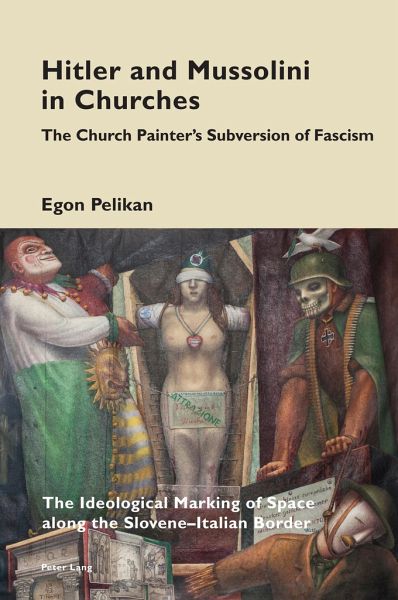
Hitler and Mussolini in Churches
The Church Painter's Subversion of Fascism: The Ideological Marking of Space along the Slovene-Italian Border
Herausgegeben: Pizzi, Katia
Versandkostenfrei!
Versandfertig in 6-10 Tagen
75,40 €
inkl. MwSt.
Weitere Ausgaben:

PAYBACK Punkte
0 °P sammeln!
When Europe fell prey to totalitarian regimes in the twentieth century, the Slovene artist Tone Kralj responded to the cruellest oppression by systematically depicting his own and his community's resistance against Fascism and Nazism in public spaces, under the very nose of the regime. As incredible as it may seem, the regime never discovered and punished his rebellious actions. The painter embedded his ideological subversion of Fascism and Nazism in wall paintings in more than fifty Catholic churches along the Slovene-Italian ethnic border, thus disseminating his subversive message among the ...
When Europe fell prey to totalitarian regimes in the twentieth century, the Slovene artist Tone Kralj responded to the cruellest oppression by systematically depicting his own and his community's resistance against Fascism and Nazism in public spaces, under the very nose of the regime. As incredible as it may seem, the regime never discovered and punished his rebellious actions. The painter embedded his ideological subversion of Fascism and Nazism in wall paintings in more than fifty Catholic churches along the Slovene-Italian ethnic border, thus disseminating his subversive message among the people with whom he shared the same cultural memory. With many of them covering a surface area of several square metres, the church paintings introduced Hitler and Mussolini into Biblical visual narratives, portraying the two dictators with irony and grotesqueness as villainous Biblical characters, often in the role of hangmen, murderers or clowns. The symbols of their regimes were incorporated into Biblical scenes depicting eschatological dimensions of the struggle between good and evil, thus spreading - in the time of the most brutal fascistization - the painter's firm belief in the historical downfall of the Fascist and Nazi regimes.













